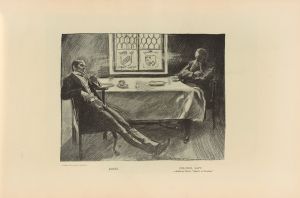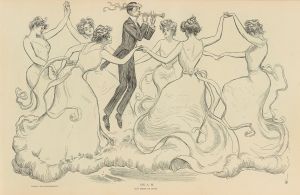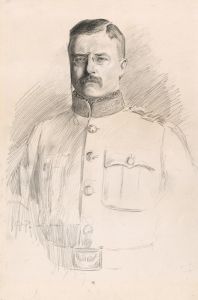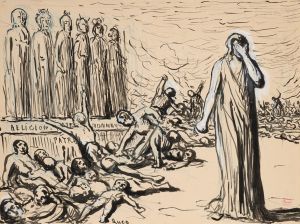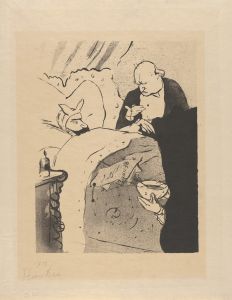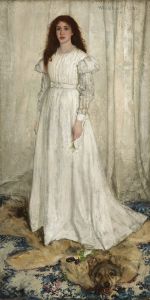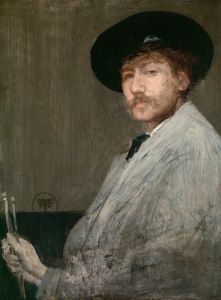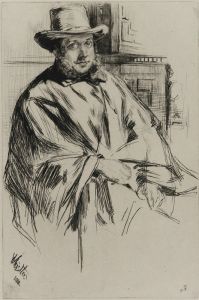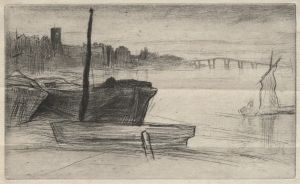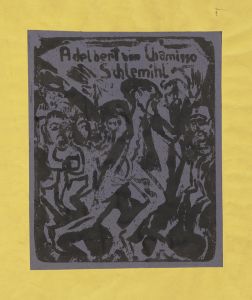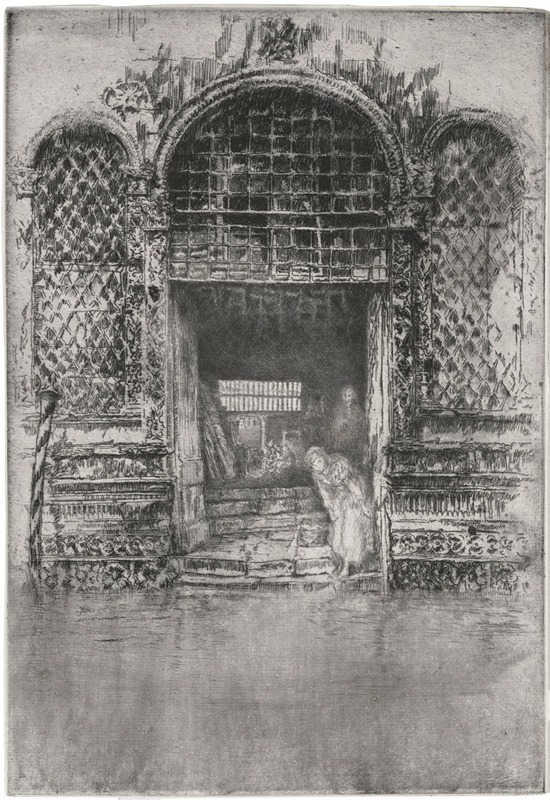
The Doorway, from Venice, a Series of Twelve Etchings
A hand-painted replica of James Abbott McNeill Whistler’s masterpiece The Doorway, from Venice, a Series of Twelve Etchings, meticulously crafted by professional artists to capture the true essence of the original. Each piece is created with museum-quality canvas and rare mineral pigments, carefully painted by experienced artists with delicate brushstrokes and rich, layered colors to perfectly recreate the texture of the original artwork. Unlike machine-printed reproductions, this hand-painted version brings the painting to life, infused with the artist’s emotions and skill in every stroke. Whether for personal collection or home decoration, it instantly elevates the artistic atmosphere of any space.
"The Doorway" is an etching by the American-born artist James Abbott McNeill Whistler, part of his renowned series "Venice, a Series of Twelve Etchings," also known as the "First Venice Set." Whistler created this series following his visit to Venice in 1879-1880, a period during which he was commissioned by the Fine Art Society of London to produce a set of etchings. This commission came at a crucial time in Whistler's career, as he was recovering from financial difficulties and the aftermath of a libel suit he had filed against the art critic John Ruskin.
Whistler's time in Venice proved to be artistically fruitful, allowing him to explore the city's unique atmosphere and architecture through his etchings. "The Doorway" is one of the most celebrated works from this series, capturing the intricate details and the play of light and shadow that characterize Venetian architecture. The etching depicts a doorway along a canal, showcasing Whistler's keen eye for composition and his ability to convey the texture and mood of the scene with remarkable precision.
In "The Doorway," Whistler employs a technique that emphasizes the contrast between the solid, architectural forms and the fluid reflections in the water. His use of line is both delicate and expressive, capturing the ornate details of the doorway and the surrounding masonry. The etching is notable for its atmospheric quality, a hallmark of Whistler's work, which often sought to evoke a sense of place and mood rather than merely document a scene.
Whistler's Venice etchings, including "The Doorway," were well-received by critics and collectors alike, helping to restore his reputation and financial stability. The series was praised for its innovative approach to the medium of etching, as Whistler pushed the boundaries of traditional techniques to achieve new levels of subtlety and depth. His work in Venice marked a significant development in his artistic style, characterized by a greater emphasis on tonal harmony and the interplay of light and shadow.
"The Doorway" and the other etchings in the series reflect Whistler's fascination with the interplay between the built environment and the natural elements of water and light. This focus on atmospheric effects and the transient qualities of the scene aligns with the broader aesthetic movement of the time, which sought to capture the fleeting impressions of modern life.
Today, "The Doorway" is considered a masterpiece of etching and an important example of Whistler's contribution to the art of printmaking. It is held in various public and private collections, where it continues to be studied and admired for its technical brilliance and evocative power. Whistler's Venice etchings remain influential, demonstrating his ability to transform everyday scenes into works of profound beauty and resonance.






